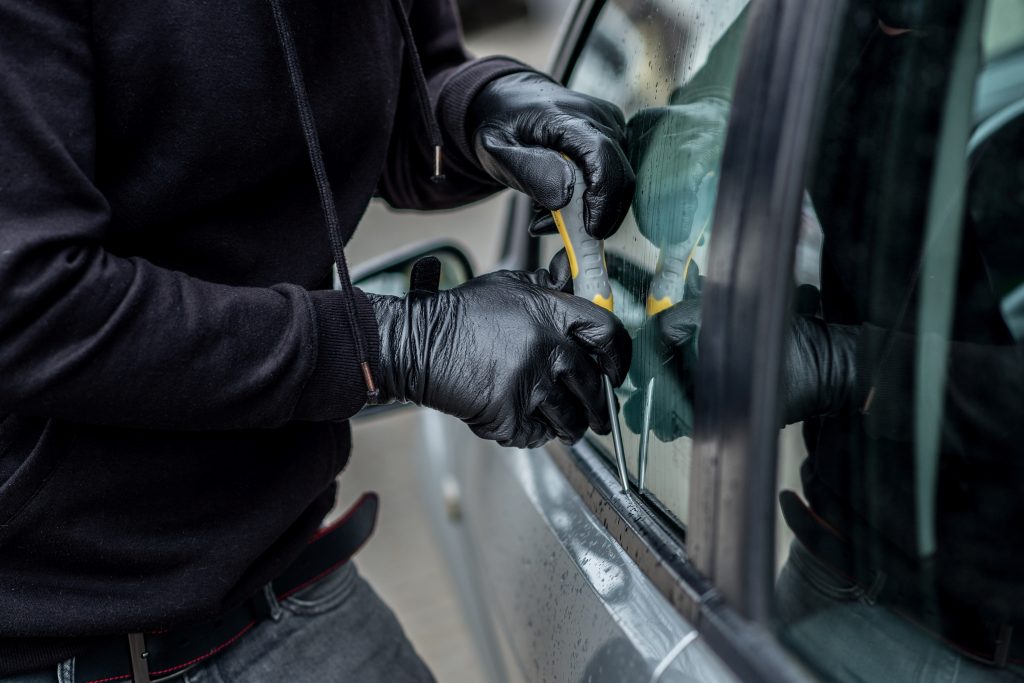Vehicle thefts in Ontario and Quebec were up by an extraordinary 50% in 2022 over 2021, according to a report released by Équité Association, an insurance industry organization dedicated to detecting and preventing insurance fraud. According to the report, the value of stolen vehicles in Canada exceeded one billion dollars last year.
The report says that stealing cars is perceived as a low-risk, high-return opportunity. The high volume of stolen vehicles being exported quickly from Canada to overseas markets makes them harder to recover and easier to resell. According to Terri O’Brien, the Executive Director of Équité Association, the proceeds from stolen vehicles sent abroad can be used to finance drug trafficking, arms dealing and human trafficking.
Car thieves like stealing vehicles in Southern Ontario and Quebec for export because the selection is good, as is the proximity to major roads for quick getaways, and access to the Port of Montreal for export. Until recently, the police forces of the various jurisdictions involved – including most importantly the ports – did not work as a team. That is now changing.

How vehicles are stolen
Vehicles are commonly stolen in one of these ways:
- From outside the vehicle, a person with a form of scanner picks up the signal between your key fob (which may be just inside the door to your home quietly communicating with your vehicle) and relays the signal, allowing the thief to unlock the vehicle and drive away, as if they had your actual fob in hand.
- From inside the vehicle, after popping the door lock, a thief will connect a laptop or other electronic device to the diagnostic port under the dashboard and “reprogram” the vehicle so it can be started with the thief’s software.
Where vehicles are stolen
Thieves look for vehicles parked outside on private driveways that likely are communicating with a keyless fob inside a home. Vehicles stolen this way usually disappear in the wee hours of the morning. The thieves work in the dark, often in pairs, and wear masks to cover their faces in the event they are picked up on security cameras.
After the larger airports which were ripe hunting grounds for car thieves implemented extra security measures, some car theft shifted to large suburban parking lots like shopping centers, where the selection of desirable vehicles is good and highways are close by for quick getaways.
Vehicles are too easy to steal
Factory theft protection is inadequate and contributes to car theft. The abandonment of the mechanical key in favour of a keyless remote and pushbutton starter button removed a layer of protection. Carmakers like Honda, Toyota and others whose vehicles are consistently at the top of most-stolen vehicles lists don’t consider it their responsibility to find a solution that makes their vehicles harder to steal or easier to recover.

The carmakers’ position: “It’s not our problem”
The car industry trade groups are gearing up to shift the blame and costs of auto theft onto someone else, with the objective of blocking any new initiatives. It’s the same playbook they followed for several years, before Transport Canada began requiring a mandatory immobilizer to supplement the old metal key in 2007. That requirement finally put a big dent in joyrides after decades of inaction by the automakers.
Here’s what the automaker trade associations are saying:
- Vehicle theft is a bigger problem in Canada than in the US when you account for the relative size of our markets. (Actually, vehicle theft is different in the US, where there is relatively more joyriding and less exporting.)
- Car theft is a criminal activity. That’s a problem for the police and Canadian governments, not the car companies. (But they will happily sell you a vehicle to replace the one that was stolen.)
- Improving theft will make cars too expensive. (Even an expense of $4-$15 per vehicle to improve theft resistance has been rejected by automakers in the past as “too expensive.” The automakers overlook that it costs about 15 times as much to improve theft resistance in the aftermarket compared to on the assembly line. That’s because they aren’t footing the bill for additional protection after a vehicle is delivered to a dealership.)
- If Canada becomes an “unfriendly” market to automakers because it mandates improved vehicle theft protection, car manufacturer associations say their members they may have to look elsewhere for their future investments in assembly plants and facilities. (When used in Ontario, this argument almost always triggers an anxiety attack with the regulators and politicians who are its targets. The auto industry just received multi-year pledges valued at over 10 billion dollars from two levels of government to manufacture vehicles in Ontario, so the threat is hollow.)
- It may become harder to export Canadian vehicles to other markets legitimately. (Canada has had a unique antitheft standard for years, now copied in the US, and it hasn’t hampered the exporting of large numbers of our best used vehicles into the United States, on account of their larger market and stronger American dollar.)
Improving vehicle theft resistance is part of the solution to the epidemic in auto thefts, obviously
Canada required vehicle manufacturers to install theft immobilizers in 2007 to combat theft, after a long and sophisticated lobbying campaign by the private vehicle insurance companies who got nowhere when they pleaded for support from the carmakers. This was followed by a large drop in vehicle thefts over several years. Later, theft levels started increasing again because law enforcement had other priorities and thieves found workarounds to the new “keyless” systems on cars. Given the absence of leadership from the automakers, it’s time the 2007 standards were updated. A push from the vehicle insurance companies who are paying out all those theft insurance claims would improve the likelihood of that happening.
